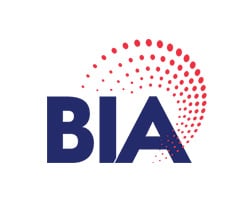Unidentified drones in restricted airspace have sparked public concern, especially in New Jersey, where recent sightings have left residents feeling pretty uneasy. While the government may have valid reasons for withholding details about the situation, its current public communication strategy is flawed and the public is getting concerned. The absence of clear, transparent messaging has created fertile ground for misinformation, conspiracy theories, and distrust.
Although the underlying reasons for the current approach remain unclear, what is clear is that a more effective public relations (PR) strategy could have mitigated these issues and strengthened public trust. To improve future handling of incidents like the drone situation, the government should critically examine its current communication plan, identify its key failures, and implement actionable PR strategies.
Current Approach: Silence, Vague Statements, and Reactive Messaging
When reports of unidentified drones emerge, government agencies often respond with silence or broad, non-specific statements. For instance, local police departments, the Federal Aviation Administration (FAA), and federal agencies like the Department of Homeland Security (DHS) typically issue one of the following responses:
- We are investigating the matter.
- At this time, there is no threat to public safety.
- No comment at all.
These responses are meant to avoid panic and maintain control over the situation. However, the unintended consequence is public confusion, distrust, and the proliferation of conspiracy theories.
It creates the opposite effect: “Are we really safe?” “Why won’t they tell us anything?” “So, is it real or a hoax?”
Without timely and honest communication, the media and the public become unnerved, filling the gaps of information with speculation and fear. This has played out in multiple instances, from drone sightings near airports to UAP sightings and the infamous China “balloon incident” over U.S. airspace in 2023.
Why the Current Approach Ignites Fear
1. Erosion of Public Trust
Silence breeds suspicion. When agencies fail to communicate effectively, the public assumes they are hiding something. This is especially true when the subject matter involves perceived threats like drones in restricted airspace. The public expects timely, clear, and honest updates, especially when national security and public safety are at stake.
2. Lack of Clarity Fuels Conspiracy Theories
Without clear and concise communication, people will create their own narratives. Conspiracy theories thrive in environments where clarity and transparency are absent. Speculation about government “psyops” (psychological operations) has become a common reaction to unexplained aerial phenomena. Each instance of “no comment” silence adds another level of distrust.
3. Delayed Response Reduces Credibility
Delays in public communication give media outlets, social media platforms, and influencers ample time to create their own interpretations of events. Once misinformation spreads, it is far more difficult for authorities to regain control of the narrative. Delays erode credibility, making it harder to reassert itself as a trusted source of truth.
4. Failure to Meet Current Media Expectations
With social media and today’s media environment, the news cycles turn faster than ever before, lasting mere hours, sometimes minutes. When there is silence for even a day, it seems like an eternity. When the public sees Twitter threads, TikTok videos, and Reddit forums discussing the topic before government agencies address it, they begin to question the competency of those in charge.
How We Should Have Handled the Drone Situation
1. Adopt a Proactive (Not Reactive) Strategy
Instead of waiting for the public or media to force a response, government agencies should be the first to acknowledge drone sightings. Transparency should be the default. Even if authorities do not have all the answers, they should be forthright about what they know and what steps are being taken.
Example: “We’re aware of recent drone activity in New Jersey. We’re investigating with (list the agencies) and will provide updates as soon as we have confirmed information.” Or, “We know these key facts: they are not threats, and they are domestic military or commercial drones.“ This reassures the public that the situation is being addressed and everything is under control.
2. Develop a Unified Communications Strategy Across Agencies
One of the biggest flaws in the current government PR approach is the fragmented messaging from different agencies. The FAA might say one thing, local police another, and federal agencies might remain silent altogether. It seems like none of them speak to each other. To address this, a unified communications plan should be implemented, designating a single agency (such as the FAA or DHS) as the primary source of information. This designated spokesperson should speak with a unified voice to promote credibility and consistency.
3. Provide Frequent Updates, Even If There’s “Nothing New”
The most important aspect of crisis communication is frequency. Even if there are no new developments, the public wants to be informed.
Example of an Update: “As of [insert time], we are still investigating the source of the drone activity and working with X agency partners. No public safety threat has been identified, and we remain committed to keeping you informed as we learn more. Since our last update, we have learned the following: [explanation here].” This approach prevents media speculation and reassures the public that authorities are actively working on the issue.
4. Address Misinformation Directly
Government agencies should actively address and debunk conspiracy theories before they gain traction. If false narratives are spreading (e.g., “The drones are part of a government psyop”), the agency’s spokesperson should respond with factual, evidence-based rebuttals.
Example: “There is no evidence that this activity is related to a ‘psyop’ or government psychological operation. We are actively investigating the source of the drones and will provide updates as new information becomes available.”
5. Leverage Digital Platforms for Real-Time Communication
Government agencies should use social media platforms like Twitter, Facebook, and Instagram for rapid response. This is where the public is already seeking information. By creating official hashtags, live Q&A sessions, and real-time updates, agencies can engage with the public directly, reducing reliance on speculative third-party sources.
Example: Use the hashtag #NJDroneUpdate so the public can track accurate information in real time.
6. Humanize the Message with Empathy and Transparency
People want to know that top officials understands their fears. Empathy-driven messaging can go a long way in calming public anxiety.
Example Message: “We understand that seeing drones in your community can be unsettling. Here’s what we’re doing to ensure public safety, and here’s how you can stay informed.” When empathy is cleared expressed, it builds trust and reduces panic.
How to Handle a Public Crisis Communications Issue
1. Acknowledge the Issue Immediately
The first step in crisis communications is to acknowledge that an issue exists. When there are delays in acknowledgment, it signals incompetence or dishonesty. A brief statement like, “We are aware of the situation and are actively working to resolve it,” is sufficient at the outset.
2. Establish a Crisis Communications Team
Designate a cross-agency team responsible for developing and delivering a unified message. This team should include PR specialists, legal advisors, and subject matter experts.
3. Communicate Early and Often
Provide regular updates, even if the update is that there is no update. Continuous communication builds trust.
4. Empathy and Reassurance
Acknowledge public concerns and validate them. Reassure the public that actions are being taken to resolve the issue.
5. Monitor Public Sentiment and Address Misinformation
Use social media monitoring tools to track public sentiment. If false information spreads, respond quickly with accurate, evidence-based information.
Conclusion
The long wait time and “wait-and-see” PR strategy regarding drone sightings is counterproductive. Silence fuels speculation, conspiracy theories, and public distrust. By adopting a proactive communications strategy, prioritizing transparency, and issuing regular updates—even when there is “nothing new” to report—authorities can regain control of the narrative. A more assertive and anticipatory approach, characterized by unified messaging, real-time social media updates, and direct public engagement, would go a long way in helping restore public confidence and provide some much-needed relief to a concerned population.
Linda Fanaras is the founder and CEO of Millennium Agency. She is an expert in brand strategy, marketing, and public relations, with a focus on helping businesses and organizations develop effective communication strategies. Linda is known for her leadership in the marketing industry and her ability to create impactful strategies for B2B companies.


























